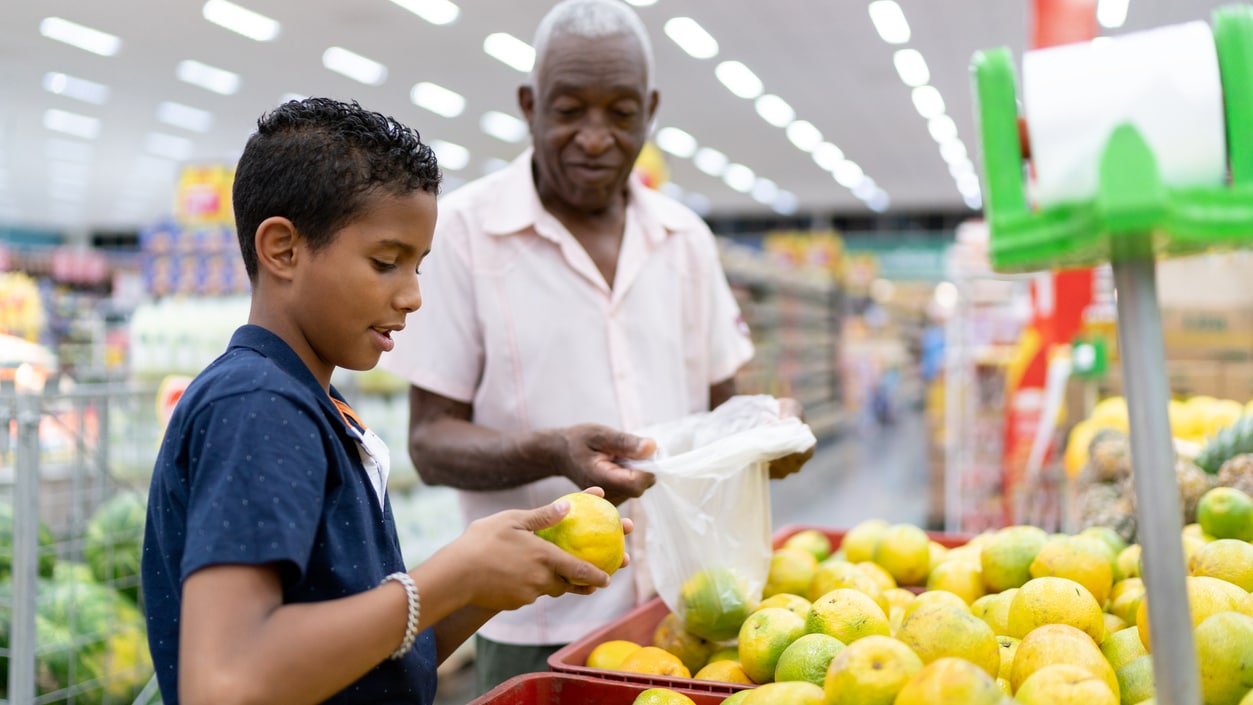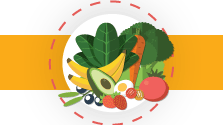What to know
Fruit and vegetable programs are evidence-based strategies to increase fruit and vegetable consumption. This page collectively refers to fruit and vegetable voucher incentives and produce prescriptions as fruit and vegetable programs. Those designing or implementing these programs can consider several key components. These include determining community needs, partners, tools and technology, and complementary programs. A community food assessment can help identify assets and gaps in food access to inform program development.

Key components
For all fruit and vegetable programs
Fruit and vegetable programs can be tailored to the needs of participants, communities, and program partners. Components to consider for successful programs include:
- Diverse funding streams.
- Cross-sector partnerships.
- Assessment of community needs.
- Inclusion of culturally preferred foods.
- Staff training on topics such as:
- Trauma-informed nutrition practices.
- Language and literacy needs.
- Supporting language and literacy needs.
For produce prescription programs
Additional key components of produce prescription programs are:
- Health care partners.
- Staff training on topics such as:
- Screening patients.
- Determining program eligibility.
- Enrolling patients.
- Referring patients to fruit and vegetable programs.
- Protecting patient data.
- Tracking participation and outcomes.
- Conducting patient follow-up.
Assessments
Assessments can reveal a community's needs and assets and help identify existing and potential partners.
Assessing community food assets and gaps helps develop programs for the cultural, religious, language, food, and health needs of priority populations. Examples of what to include in an assessment are:
- Transit needs.
- Cultural and religious preferences related to diet.
- Language and literacy needs.
- Dietary and medical needs.
- Cooking knowledge and ability.
- Community food assets and trusted partners.
- Sources for culturally preferred produce.
An assessment can also identify past, current, and planned fruit and vegetable programs, partners, and funding. Use these to leverage, engage, or improve programs to better meet the needs of priority communities.
Other examples of what to include in an assessment are:
- Health care partners (for produce prescriptions).
- Incentive distribution partners.
- Funding sources.
- Eligibility criteria.
- Program models.
- Sites to redeem vouchers and prescriptions.
Potential partners

Partners in fruit and vegetable programs vary according to the unique needs of the priority populations and available partners. Consider these potential partners.
Health care providers and staff
Produce prescription programs help meet patients' food and nutrition needs as part of holistic health care. Staff in hospitals, clinics, federally qualified health centers, primary care offices, and other health care settings screen patients for eligibility in produce prescription programs. These health care providers prescribe fruits and vegetables that align with patient health needs and cultural preferences. They also track patients' overall health, report use of and responses to the program, and conduct appropriate follow-up.
Charitable food system leaders and staff
Identifying a reliable supply of high-quality and culturally preferred fruits and vegetables for the program is important. Some produce prescription programs supply free produce to eligible patients. For these models, food bank and/or food pantry partners are critical. For example, patients may receive free fruits and vegetables from:
- A food bank at the health care provider's location.
- A food pantry or brick-and-mortar food pantry on-site at the health care provider's location.
- A food bank delivery to their homes.
- A nearby partner food pantry.
Produce growers, aggregators, processors, distributors, and retailers
These partners help ensure the consistent availability of affordable, quality, and culturally preferred fruits and vegetables. It is important to involve these partners when the fruit and vegetable programs include referrals to or resources related to retail food outlets. These outlets may include farmers' markets, mobile markets, community-supported agriculture (CSA), grocery stores, food hubs, and other assets.
Nutrition education staff
Produce prescription programs often include classes to educate participants on their unique nutritional needs to prevent disease or manage their health. Fruit and vegetable program leaders may choose to partner with programs that already offer nutrition education classes. These programs include Women, Infants, and Children (WIC), Supplemental Nutrition Assistance Program Education (SNAP-Ed), and Expanded Food and Nutrition Education Program (EFNEP).
Coalitions
These include food policy councils, health coalitions, and other state, regional, or community-based coalitions. These groups offer a mechanism to convene diverse, cross-sector partners who can help conduct outreach for fruit and vegetable programs.
SNAP-Ed partners
State SNAP-Ed agencies and their implementation partners often provide various types of support for fruit and vegetable programs. Direct education can support nutrition education of fruit and vegetable training program participants. It can also support training for related strategies such as food policy councils.
The support may also include coordination of policy, systems, and environmental (PSE) strategies. PSE strategies can cover many activities that are important to fruit and vegetable programs, such as coordinating food policy councils and improving healthy food environments. SNAP-Ed partners also coordinate State Nutrition Action Councils (SNACs), which can engage with state or regional fruit and vegetable program efforts.
Special tools and technology
For incentive vouchers
Incentive programs provide vouchers to redeem for fruit and vegetables in a retail setting typically require systems to process payments and the incentive. A payment system example is electronic benefits transfer point-of-sale equipment.
There must be a mechanism for tracking eligibility for incentives, incentive distributions and redemption, and reimbursements, if applicable. For example, reimbursements may be to grocery stores or farmers. Programs with an online retail component need technologies supporting online food shopping, payment processing, and incentive processing.
For produce prescriptions
Produce prescription programs need a way to screen potential patients and track their enrollment. These programs also need a way to refer the patient to fruit and vegetable programs and provide a prescription to the patient. Patients may be screened for social needs or food insecurity. Eligibility can also be determined in other ways, such as health risks or diagnoses or participation in the Supplemental Nutrition Assistance Program (SNAP), Medicaid, or WIC.
Complementary programming
Complementary programming can help people get the full benefits of fruit and vegetable programs. It is best to offer complementary programming with other scheduled appointments or services to reduce participant burden. For example, combine programming with clinic or hospital visits, produce pick-up at food pantries, or shopping hours at farmers' markets or other retail sites. Complementary programs may include:
Training for partners, staff, and participants on how to use fruit and vegetable incentives and produce prescriptions. Training should be culturally and linguistically inclusive.
Nutrition education on topics such as food, nutrition, cooking, and shopping on a budget. These teach participants how to select, store, and prepare fruits and vegetables.
Health screenings to monitor improvements since the previous diagnosis.
Physical activity or fitness programs, such as walking groups or exercise classes.
Benefits eligibility assessments and enrollment placed where participants receive SNAP, WIC, or other social needs programs.


